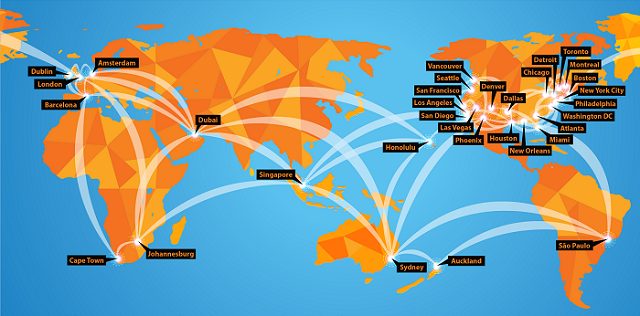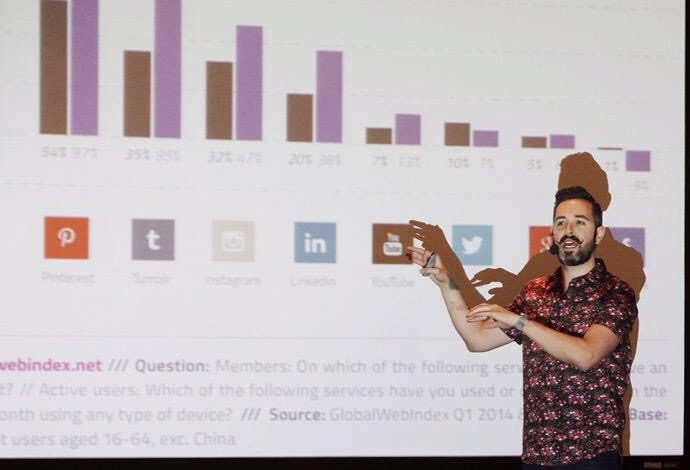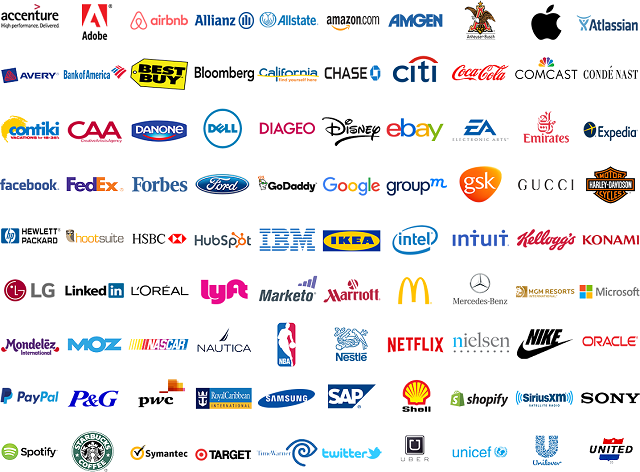Personalized Customer Journeys: Tailored Experiences, Increased Profits
In today’s digital world, businesses are looking for ways to improve customer experience and boost sales. One key strategy is to offer experiences that match each customer’s unique needs and habits.
Using targeted messaging, companies can make customers happier, which leads to more profits. This method helps businesses connect with their audience in a personal way. It builds loyalty and supports long-term growth.
Let’s dive into Personalized Customer Journeys. We’ll look at their advantages and share tips on how to use them to increase your return on investment.
The Shift from Mass Marketing to Individual Experiences
The marketing world has changed a lot. Now, it focuses on personalized customer experiences instead of the old one-size-fits-all way. Thanks to data analytics and journey mapping, companies can really get to know their customers. They can then make their marketing more tailored.
This change is all about making real connections with customers. It makes their customer experience better. With data analytics, companies learn what customers like and what they struggle with. This helps them make their marketing more focused.
Journey mapping is key in this shift. It lets businesses see how customers move through different points of contact. This helps spot where they can improve and offer more personalized experiences. These experiences can make customers more engaged and loyal.
So, companies are leaving behind old mass marketing methods. They’re moving towards a more personal approach that speaks to their audience. This change isn’t just about using new tech. It’s about really understanding the customer and adding value at every step of their journey.
What Are Personalized Customer Journeys?
Personalized customer journeys change how businesses talk to their customers. They offer experiences that fit each person’s needs. This is done by using user segmentation and CRM integration. This way, companies can guide customers through their buying journey, making them more engaged and loyal.
At its heart, a personalized customer journey is about knowing what the customer likes and needs. It gives them content and offers that matter to them. This makes customers happier and helps businesses grow by getting more sales and keeping customers longer.
Key Components of Personalized Journeys
- User Segmentation: This means grouping customers based on who they are and how they act. It helps give them experiences that are just for them.
- CRM Integration: Using customer relationship management systems helps keep all customer data in one place. This makes talking to customers across different points easy.
- Data-Driven Insights: Looking at customer data helps understand what they like and do. This information shapes the personalized journey plans.
With these important parts, businesses can make personalized customer journeys. These journeys not only meet but also go beyond what customers expect. This leads to lasting loyalty and more money for the business.
The Direct Link Between Personalization and Profit
Companies can greatly increase their revenue by using targeted messaging, omnichannel marketing, and automation. Personalization is more than just a marketing term. It really makes a difference in a company’s profits.
To see this impact, businesses need to focus on customer-centric strategies. These strategies should meet each customer’s unique needs and actions. Omnichannel marketing makes sure customers have a smooth experience everywhere, from emails to stores. This unity builds loyalty and boosts sales.
Targeted messaging is key in personalization. It sends the right content to the right people at the right time. With automation, businesses can handle big personalization tasks well, keeping customer interactions high-quality.
Research shows that personalized experiences can greatly increase sales and keep customers coming back. By using data to personalize, companies can connect deeply with their customers. This connection leads to more profits.
Building Your Data Foundation
To make personalized customer journeys work, businesses need a strong data base. They must use data analytics and CRM integration. This helps them understand what customers like and do.
A good data base is key for many reasons. It lets businesses collect and analyze customer data from many places. This gives a full picture of how customers interact with them. It also makes it easy to mix data from different places, like social media and customer feedback.
The main parts of a strong data base are:
- Data Collection: Getting data from many sources, like customer interactions and feedback.
- Data Integration: Putting data from different places together into one system. This gives a clear view of the customer.
- Data Analysis: Using tools to look at customer data. This helps understand what customers like and do.
With a solid data base, businesses can:
- Enhance Customer Experience: Knowing what customers like, businesses can make their marketing better.
- Improve Personalization: With a full view of customer interactions, businesses can make journeys that really speak to customers.
- Drive Business Growth: Making customers happy leads to loyalty and more business.
In short, having a strong data base is essential for personalized customer journeys. By using data analytics and CRM integration, businesses can really get to know their customers. This leads to happier customers and more business growth.
Customer Journey Mapping for Personalization
Customer journey mapping is key to personalization. It helps businesses see how customers interact with them at different points. This way, companies can spot where customers might struggle or where they can engage more.
Creating a good journey map means collecting data from many places. This includes what customers say, what they buy, and their social media activity. This data helps make a detailed map of the customer’s path, showing where personal touches can make a big difference.
Best Practices for Journey Mapping
To make journey mapping work well, follow these tips:
- Use accurate and comprehensive data to inform the journey map.
- Involve cross-functional teams in the mapping process to ensure a unified understanding of the customer’s journey.
- Continuously update and refine the journey map as new data becomes available.
By following these best practices and using journey mapping for personalization, businesses can offer more engaging experiences. This leads to happier customers and more sales. As companies keep working on personalizing for their customers, making accurate and useful journey maps is more important than ever.
Advanced User Segmentation Strategies
The secret to great personalization is advanced user segmentation strategies that use data analytics. By dividing customers into detailed groups, companies can make their messages and offers fit each person’s needs. This makes the customer experience better.
Advanced user segmentation is more than just basic info like age or location. It includes things like how customers act, what they buy, and more. This way, companies can send targeted messaging that really speaks to each group. This boosts engagement and sales.
Leveraging Data Analytics for Segmentation
Data analytics is key in advanced user segmentation. By looking at customer data, companies can spot trends and likes that help shape their strategies. This method makes sure segments are right and useful, leading to better personalization.
- Behavioral data analysis to identify customer habits and preferences
- Purchase history analysis to understand customer buying patterns
- Demographic data analysis to identify key customer characteristics
Using advanced user segmentation, companies can get customers more involved, boost sales, and grow their revenue. As the digital world keeps changing, the need for smart segmentation will keep growing.
CRM Integration: The Backbone of Personalized Journeys
The key to a great personalization plan is strong CRM integration. It links CRM systems with other marketing tools. This way, businesses can make a single customer profile. They can then offer personalized experiences everywhere.
CRM integration helps manage customer interactions and data well. It gives a complete view of each customer. This is key for knowing what customers like and need, making personalization better.
With a full CRM system, businesses can automatically collect and analyze customer data. This makes marketing efforts more focused and relevant. Customers get content and offers that match their interests, improving their customer experience.
This leads to better personalization plans, more customer engagement, and loyalty. By using Personalized Customer Journeys, businesses can build stronger connections with customers. This can lead to more profits and growth over time.
Automation and AI in Customer Journey Personalization
Automation and AI are changing how businesses personalize customer experiences. They help companies deliver tailored experiences on a big scale. By using these technologies, businesses can automate simple tasks. This lets them focus on creating more complex and targeted messaging campaigns.
Automation is key in making personalization work. It helps businesses quickly sort through lots of customer data. This lets them spot patterns and preferences, making experiences more personal. AI takes it a step further by analyzing how customers behave and adjusting marketing plans as needed.
Automation and AI also help predict what customers might do next. They spot when customers might leave or when they might buy more. By using predictive analytics, companies can tweak their marketing to keep customers engaged and boost sales.
To use automation and AI well, businesses need strong data and advanced analytics. With these tools, they can make marketing campaigns that really work. This leads to more profits and happier customers.
Omnichannel Personalization Strategies
Unlocking customer loyalty starts with effective omnichannel personalization. Businesses can make the customer journey more cohesive and engaging. This leads to higher profits.
Omnichannel personalization means giving customers the same great experience everywhere. This includes social media, email, mobile apps, and stores. First, businesses need to know what their customers like and do on these platforms.
Key Strategies for Omnichannel Personalization:
- Implement a unified customer data platform to consolidate customer information across all touchpoints.
- Use advanced analytics to gain insights into customer behavior and preferences.
- Develop targeted marketing campaigns that are tailored to specific customer segments.
- Ensure consistent branding and messaging across all channels.
These strategies help businesses offer a personalized experience. For example, a customer who leaves their cart on a mobile app might get a reminder email. This email could have a special offer to finish the purchase. It makes the customer happy and boosts sales.
To improve omnichannel personalization, companies can use AI and machine learning. These tools help predict what customers will like and do next. This way, businesses can stay ahead and build strong customer relationships.
Crafting Targeted Content That Drives Conversion
In today’s market, making content for each customer is crucial for success. Targeted messaging helps businesses talk directly to their customers. This makes the customer experience better.
First, companies need to know what their customers like and do. They use journey mapping to find key moments for personalized content. This content can really help.
- Analyze customer data to understand their needs and preferences.
- Develop content that is relevant and timely, addressing the customer’s current stage in their journey.
- Use targeted messaging to create a more personalized experience.
By using these methods, businesses can make their customer experience more engaging. This leads to more conversions and higher revenue. Good journey mapping means content is shared at the best time, making it more effective.
Measuring ROI of Personalized Customer Journeys
It’s key to measure the ROI of personalized customer journeys to make smart decisions. By using data analytics and CRM integration, businesses can see how personalization affects their profits.
To get a clear picture of ROI, companies need to watch important metrics. These include conversion rates, how much it costs to get a new customer, and how much a customer is worth over time. A marketing expert said, “It’s vital to measure personalization’s success to prove it’s worth the cost.”
“Personalization is not just about addressing customers by their names; it’s about creating a tailored experience that resonates with them,”
This shows how deep personalization can be.
Good measurement means combining data from all touchpoints and using advanced analytics. This helps businesses improve their personalization plans. It makes their marketing more effective, leading to better ROI.
By focusing on data-driven personalization and always checking its results, businesses can stay ahead. As customer expectations change, being able to adjust personalization strategies will be more important than ever.
Conclusion: Future-Proofing Your Personalization Strategy
As the marketing world keeps changing, businesses need to keep up. By focusing on the customer and using new tech, companies can make Personalized Customer Journeys that lead to lasting success.
To make your strategy future-proof, build a strong data base for omnichannel marketing. This way, you can give customers a smooth experience everywhere, making their journey better.
Use advanced ways to segment users, link your CRM, and automate. This helps you make content that really speaks to your audience. It’s also key to see how your personalized journeys are helping your business.
As you go forward, stay flexible and ready to change your plan. This is because consumer habits and tech are always shifting. By being adaptable, you’ll be ready to offer Personalized Customer Journeys that help your business grow and thrive in a tough market.
FAQ
What is the primary goal of creating personalized customer journeys?
The main goal is to make customers more engaged and boost sales. This is done by tailoring experiences to what each customer likes and does.
How do businesses benefit from adopting a personalized marketing approach?
Businesses see more happy customers, keep them longer, and make more money. It’s all about making customers feel valued.
What role does data analytics play in creating personalized customer journeys?
Data analytics is key to knowing what customers like and do. It helps businesses make experiences that really speak to each customer.
How does CRM integration support personalized customer journeys?
CRM integration helps manage how businesses talk to customers. It makes sure every interaction is smooth and personal.
What is the significance of user segmentation in personalization?
User segmentation lets businesses group customers by who they are. This makes marketing more focused and effective.
How can automation and AI enhance customer journey personalization?
Automation and AI help make experiences more tailored and efficient. They handle the routine stuff so businesses can focus on the personal touches.
What is omnichannel personalization, and why is it important?
Omnichannel personalization means giving customers a consistent experience everywhere. It makes the journey smoother and more enjoyable.
How can businesses measure the ROI of their personalized customer journeys?
Businesses can track the ROI by using data and CRM tools. This shows how personalization affects their profits.



































No comments